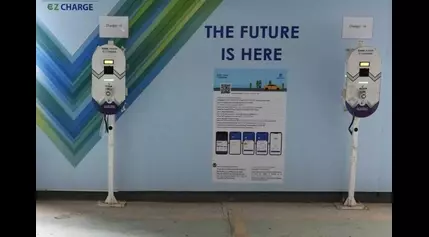Finance

Tesla's Uphill Battle to Conquer India's Automotive Market
In a tale of unfulfilled promises and shifting market dynamics, Tesla's journey to establish a foothold in India's burgeoning automotive landscape has been a rollercoaster ride. Despite the initial enthusiasm from Indian consumers, the American electric vehicle (EV) giant has struggled to navigate the complexities of the world's third-largest auto market, leaving many early adopters disappointed and questioning the company's commitment to the region.Navigating the Challenges of India's Unique Automotive Landscape
The Affordability Conundrum
India's automotive market is vastly different from the United States, with the average car price in 2023 being just ,000, compared to ,000 in the US. This stark contrast poses a significant challenge for Tesla, as its vehicles are typically priced as luxury items in India, putting them out of reach for the majority of the population. To make its cars more accessible, Tesla would need to find a way to significantly reduce the price point, which could involve local manufacturing and leveraging India's favorable EV import duties.The Importance of Localized Production
India's government has implemented policies to encourage domestic manufacturing, including reducing import duties for EVs priced under ,000, provided the automaker commits to building a factory in the country within three years. This move is aimed at protecting the interests of established Indian automakers like Mahindra and Maruti Suzuki, while also enticing global players like Tesla to invest in local production. However, Tesla's concerns about the potential for import duties to double the prices of its vehicles have so far prevented the company from making a firm commitment to building a factory in India.The Evolving EV Landscape
The EV market in India has undergone a significant transformation in the past five years, with other automakers, both domestic and international, launching their own electric models. Companies like Tata Motors, Mahindra, and the Chinese giant BYD have gained a significant foothold in the market, offering a range of affordable and premium EV options. This increased competition has eroded Tesla's first-mover advantage, as Indian consumers now have more choices when it comes to electric vehicles.The Importance of Localized Expertise and Infrastructure
Establishing a successful presence in the Indian market requires more than just offering a desirable product. Tesla would need to build a comprehensive sales and service network, as well as a robust charging infrastructure, to cater to the needs of Indian consumers. Automakers like Mercedes-Benz and Audi, which have been operating in India for decades, have a distinct advantage in this regard, with established dealerships and after-sales support systems.The Geopolitical Landscape
The deteriorating relationship between India and China, following a military clash in 2020, has also created additional challenges for Tesla. While India claims it does not restrict imports of Chinese EVs, the country's protectionist policies and the growing dominance of domestic and Chinese automakers in the EV market could make it increasingly difficult for Tesla to gain a foothold.The Shifting Global Dynamics
Tesla's global position has also evolved since its initial promise to enter the Indian market. The company has faced slowing sales and production challenges, with its only new product, the Cybertruck, lacking a significant market outside the US. This has put pressure on Tesla to focus on more established and lucrative markets, potentially relegating India's expansion plans to a lower priority.The Path Forward
To succeed in the Indian market, Tesla will need to address the unique challenges it faces, including affordability, localized production, and infrastructure development. The company's ability to adapt its strategy and offerings to the specific needs of Indian consumers will be crucial in determining its long-term success in the region. As the EV landscape continues to evolve, Tesla's ability to maintain its competitive edge and capitalize on the growing demand for electric vehicles in India will be closely watched by industry observers and consumers alike.

